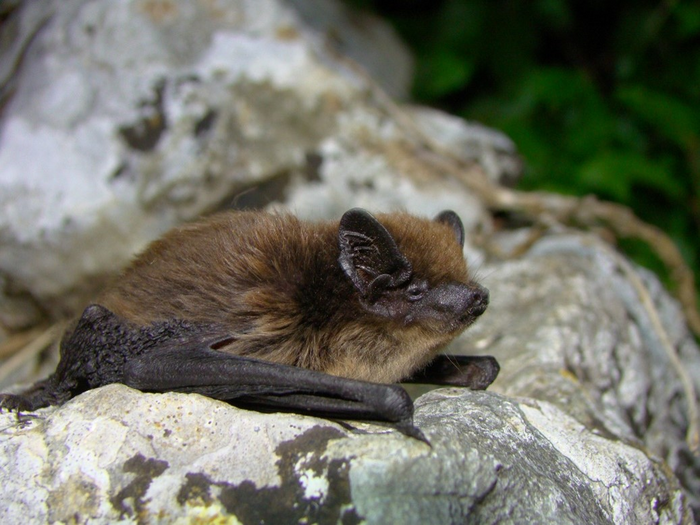Current mitigation strategies are efforts like blanket curtailment, which slows blade rotation to less than one revolution per minute at the low wind speeds which have been found to cause the highest number of bat fatalities. Wind power is not viable now, and such an unsophisticated procedure applying a general wind speed threshold for all wind turbines for a longer period of time causes even more loss of energy generation.
A four-year monitoring program at Rudine wind farm, Croatia, found a high number of bat carcasses found from mid-July to the end of October, which indicated a clear need for a better mitigation strategy at that time of year. In addition to the known importance of wind speed, the analysis also confirmed the significant role of temperature and rainfall on bat activity, which was reduced during periods of rain and at temperatures below 11°C.

Nyctalus leisleri commonly known as the Lesser noctule. Credit: Dina Rnjak, Geonatura Ltd.
So they created a site-specific wind turbine curtailment strategy dependent on the specific wind-speed range most dangerous for the bats, adapted to the most critical time periods and most significantly located wind turbines.Their strategy included a process called blade feathering, which adjusts the angle of the turbine blade to prevent undesirable freewheeling. The overall effectiveness of this approach was confirmed in trials conducted over two years.
Using the same method at another wind farm in Croatia showed that different critical wind speed thresholds needed to be applied at that site to achieve a significant reduction in fatalities while not reducing energy generation much, in a relative sense.
“Our work shows that electricity production losses can be significantly reduced by replacing blanket curtailment with more adaptable and site-specific approaches,” says lead author Dina Rnjak of Geonatura Ltd.





Comments